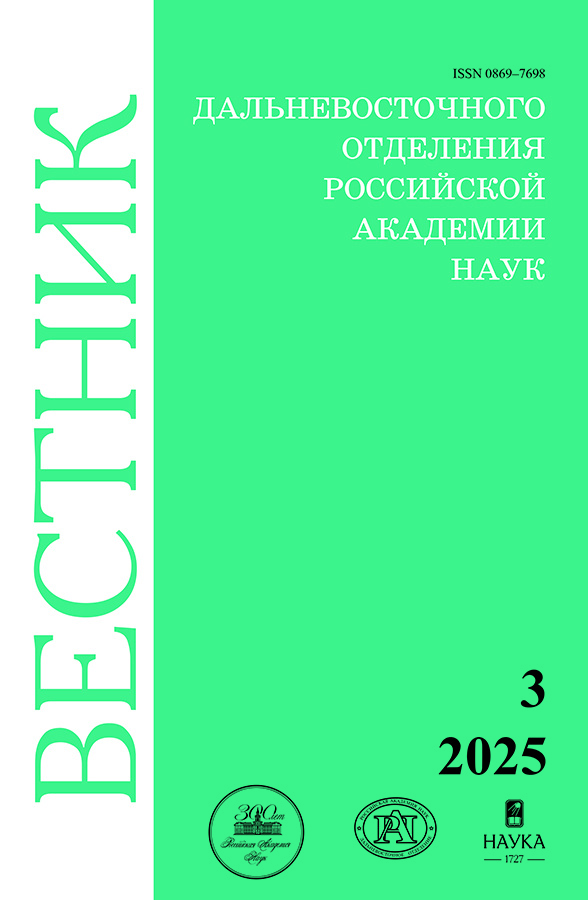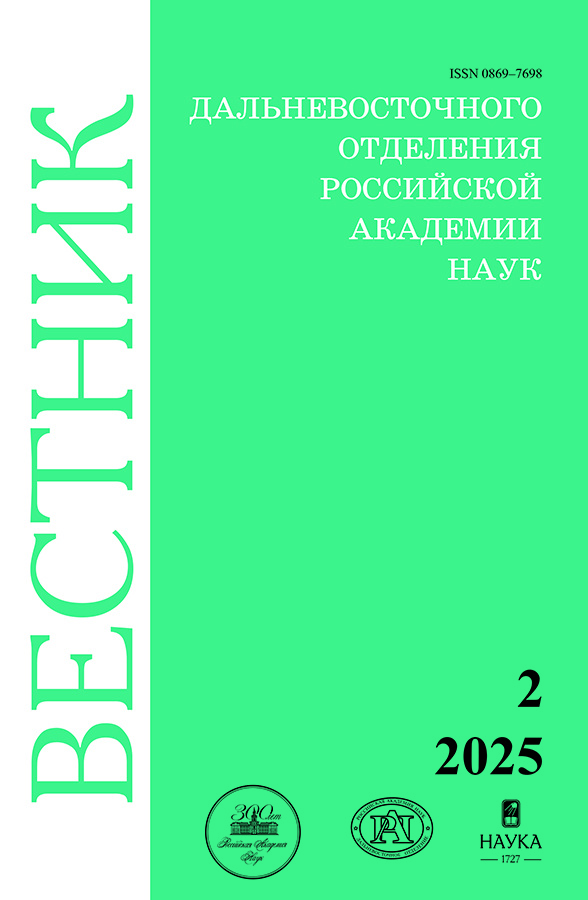Analysis of the aircraft observations related to atmospheric turbulence in Eastern Siberia and Russian Far East
- Authors: Verbitskaya E.M.1, Verbitskaya Z.V.1, Romanskiy S.О.1
-
Affiliations:
- Far Eastern Regional Hydrometeorological Research Institute
- Issue: No 2 (2025)
- Pages: 90-101
- Section: Earth and Environment Sciences
- URL: https://permmedjournal.ru/0869-7698/article/view/687254
- DOI: https://doi.org/10.31857/S0869769825020079
- EDN: https://elibrary.ru/GESPXW
- ID: 687254
Cite item
Full Text
Abstract
In the article, analysis of aircraft observations for atmospheric turbulence on the territories of Eastern Siberia and Russian Far East from January, 2020 to July, 2024 is presented. Observations have been divided by seasons, geographical areas, vertical layers and intensity. The majority of turbulence observations reported from the layers of the upper part of troposphere. Turbulence observations, in the lower part of troposphere, principally, fixed in the planetary boundary layer and showed moderate and severe turbulence near main airports of the region under consideration. Possibility to define type of turbulence based on aircraft, surface and satellite observations and numerical modeling is discussed.
Full Text
About the authors
Eugenia M. Verbitskaya
Far Eastern Regional Hydrometeorological Research Institute
Email: werbaem@gmail.com
ORCID iD: 0009-0006-5776-9736
Candidate of Sciences in Geography, Leading Researcher
Russian Federation, VladivostokZinaida V. Verbitskaya
Far Eastern Regional Hydrometeorological Research Institute
Email: derez@ya.ru
Junior Researcher
Russian Federation, VladivostokStanislav О. Romanskiy
Far Eastern Regional Hydrometeorological Research Institute
Author for correspondence.
Email: khvrom@ya.ru
ORCID iD: 0000-0001-6613-6881
Candidate of Sciences in Physics and Mathematics, Senior Researcher
Russian Federation, VladivostokReferences
- Verbickaja E.M., Romanskij S.O. Ispol’zovanie vysokoproizvoditel’noj vychislitel’noj tehniki dlja chislennogo modelirovanija i prognozirovanija opasnyh dlja aviacii javlenij pogody v Dal’nevostochnom regione. In: Informacionnye tehnologii i vysokoproizvoditel’nye vychislenija: materialy VI Mezhdunarodnoj nauchno-prakticheskoj konferencii (Habarovsk, 14–16 sentjabrja 2021 g.). Habarovsk: Tihookeanskij Gosudarstvennyj Universitet; 2021. S. 40–45. (In Russ.).
- Skamarock W.C., Klemp J.B., Dudhia J., Gill D.O., Liu Z., Berner J., Wang W., Powers J.G., Duda M.G., Barker D.M., Huang X. A description of the advanced research WRF model version 4 (No. NCAR/TN-556+STR). Boulder: National Center for Atmospheric Research; 2021. doi: 10.5065/1dfh-6p97.
- Lee D., Chun H., Kim S., Sharman R.D., Kim J. Development and evaluation of global Korean aviation turbulence forecast systems based on an operational numerical weather prediction model and in situ flight turbulence observation data. Weather and Forecasting. 2022;37:371–392. doi: 10.1175/WAF-D-22-0086.1.
- Sharman R.D., Lane T. (Eds.). Aviation turbulence: processes, detection, prediction. Springer International Publishing; 2016. doi: 10.1007/978-3-319-23630-8.
- Vinnichenko N.K., Pinus N.Z., Shmeter S.M., Shur G.N. Turbulentnost’ v svobodnoj atmosfere. Leningrad: Gidrometeoizdat; 1976. 288 s. (In Russ.).
- Obuhov A.M. Turbulentnost’ i dinamika atmosfery. Leningrad: Gidrometeoizdat; 1984. 414 s. (In Russ.).
- Foudad M., Sanchez-Gomez E., Jaravel T., Rochoux M., Terray L. Past and future trends in clear-air turbulence over the Northern Hemisphere. Journal of Geophysical Research: Atmospheres. 2024;129. e2023JD040261. doi: 10.1029/2023JD040261.
- Barry R.G. Mountain weather and climate. Cambridge: Cambridge university press; 2008. doi: 10.1017/CBO9780511754753.
Supplementary files











